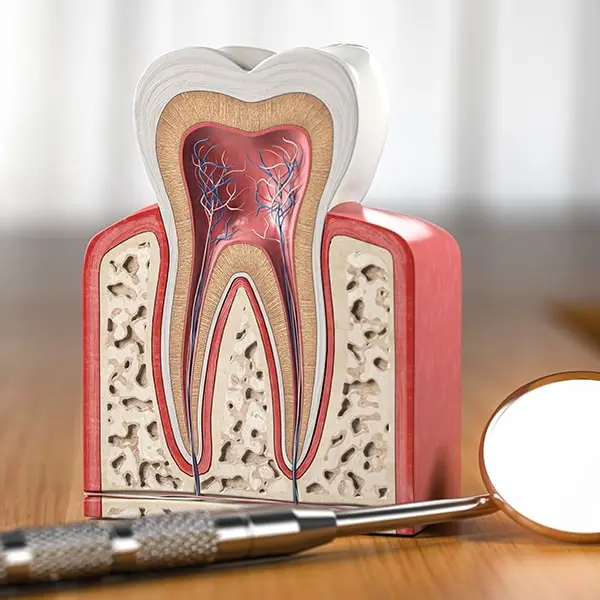Magnum Clinic specializes in re-root canal treatments in Dubai. With our cutting-edge technology and experienced team of re-root canal specialists, they can help you get your smile back on track. We offer a new, innovative re-root canal treatment in Dubai that can re-root your tooth and relieve your pain – without having to go through another invasive procedure. Book an appointment at no 1 dental clinic in Dubai.

Re-root canal is a common dental procedure that is used to restore teeth that have been damaged by decay or infection. Re-root canal in Dubai by Magnum Clinic is a highly effective dental procedure that can save a previously treated tooth from extraction. The procedure involves removing the infected or decayed tissue from the tooth's root canal and then filling the canal with a sealant to protect it from further damage. Re-root canal may be necessary if the original root canal treatment was unsuccessful or if the tooth has become severely infected.
Re-root canal therapy is necessary when the tooth's pulp becomes infected. The infection can cause significant pain and inflammation, and can even lead to the death of the tooth's pulp. A re-root canal removes the infected pulp and replaces it with a special sealant that protects the tooth from future infection.
Re-root canal procedure is the same as the original root canal treatment, except that the dentist will reopen the tooth to remove any remaining infection and clean out the canal. The dentist will then seal the tooth again with a filling material.
There is a small risk of complications associated with a Re-root canal procedure. These can include, but are not limited to, infection, pain, and nerve damage. It is important to discuss any concerns you have about the procedure with your dentist before scheduling it.
A re-root canal is a dental procedure that is used to clean and restore a tooth that has been damaged by a previous root canal. The procedure begins by removing the existing filling material from the tooth. Next, the dentist will use special tools to remove any remaining infected tissue from the tooth's roots. Once the infection has been removed, the dentist will clean and prepare the tooth for a new filling. Finally, the dentist will seal the tooth with a permanent filling.
The recovery time after a Re-root canal can vary depending on the individual. In general, however, most people will experience some discomfort and swelling in the mouth for a few days following the procedure. It is also common to have some minor bleeding and to have a bad taste in the mouth. Most people can return to their
normal activities within a week or so.
After a tooth has had a root canal, the patient needs to take care of the tooth in order to ensure success of the treatment. The patient should brush and floss their teeth regularly, and should avoid crunching down on hard foods. They should also visit their dentist for regular check-ups. If the patient experiences any pain or swelling,
they should call their dentist immediately.
Retreatment
The most common option for failed root canals is retreatment. This option has the highest success rate, and involves removing the original filling and disinfecting the canal. We then reseal the area to help prevent further infection and to stop bacteria from entering.
Apicoectomy
This procedure is done when there is a blockage around the tooth that prevents access to the root canal. If a crown was placed during the original procedure this option works well. During this process a small flap is created in the gum to access the root. We then remove the infected area, and place a new seal down to prevent further infection.
Extraction
This is the last resort if retreatment is not effective, or we cannot restore the tooth in any other way. With this option implants may be used to fill the empty space where the tooth was extracted.
If the dental professional misses tiny, hidden canals or curved canals during the first treatment, the bacteria inside them may not be entirely removed and can cause infection. Immediately after the root canal, the dental professional often places a temporary filling to provide a short-term seal for the root canal before placing the
permanent restoration (such as a crown or filling). If there is a delay in placing the permanent restoration, there is a greater chance that the root canal can get reinfected. If bacteria in the saliva get under the filling material before the filling is placed, the canal can become reinfected. If the patient doesn't maintain proper oral hygiene, new cavities can form on the same tooth that already received a root canal. A filling or crown placed on the tooth that received the root canal can crack, loosen or break, allowing a new infection to start.
A dentist can repeat root canal treatment on a tooth two or more times. But successive root canal treatments don’t always make sense.
















Looking for a dental clinic near me? From routine check-ups to advanced treatments, our dental specialists are dedicated to providing exceptional dental care in Dubai.
